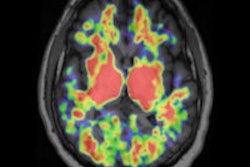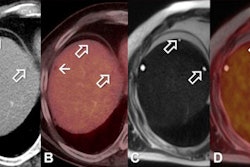In a previous study, Michael O'Connor, PhD, and colleagues found that adding molecular breast imaging using 20 mCi of technetium-99m (Tc-99m) sestamibi to screening mammography for women with dense breasts found an additional 7.5 cancers per 1,000 women screened. In this scientific session, O'Connor's group will present findings that show MBI at a much lower dose is an effective adjunct to mammography in women with dense breasts.
The study included 1,578 women with dense breasts according to past screening mammography. The women underwent digital mammography and MBI. MBI was performed with 8 mCi of Tc-99m sestamibi and an MBI system with dual-head cadmium zinc telluride digital detectors. Mammograms were read independently; the MBI exams were read in comparison with the mammograms.
Of the 1,578 women, 21 had breast cancer. Mammography found five, for sensitivity of 24%; when combined with MBI, sensitivity climbed to 91% (19 out of 21 cancers). At the lower radiopharmaceutical dose, MBI in combination with mammography had a supplemental yield of 8.8 cancers per 1,000 women -- leading O'Connor's team to conclude that lower doses were as effective for finding cancer as the higher-dose MBI plus mammography.



















